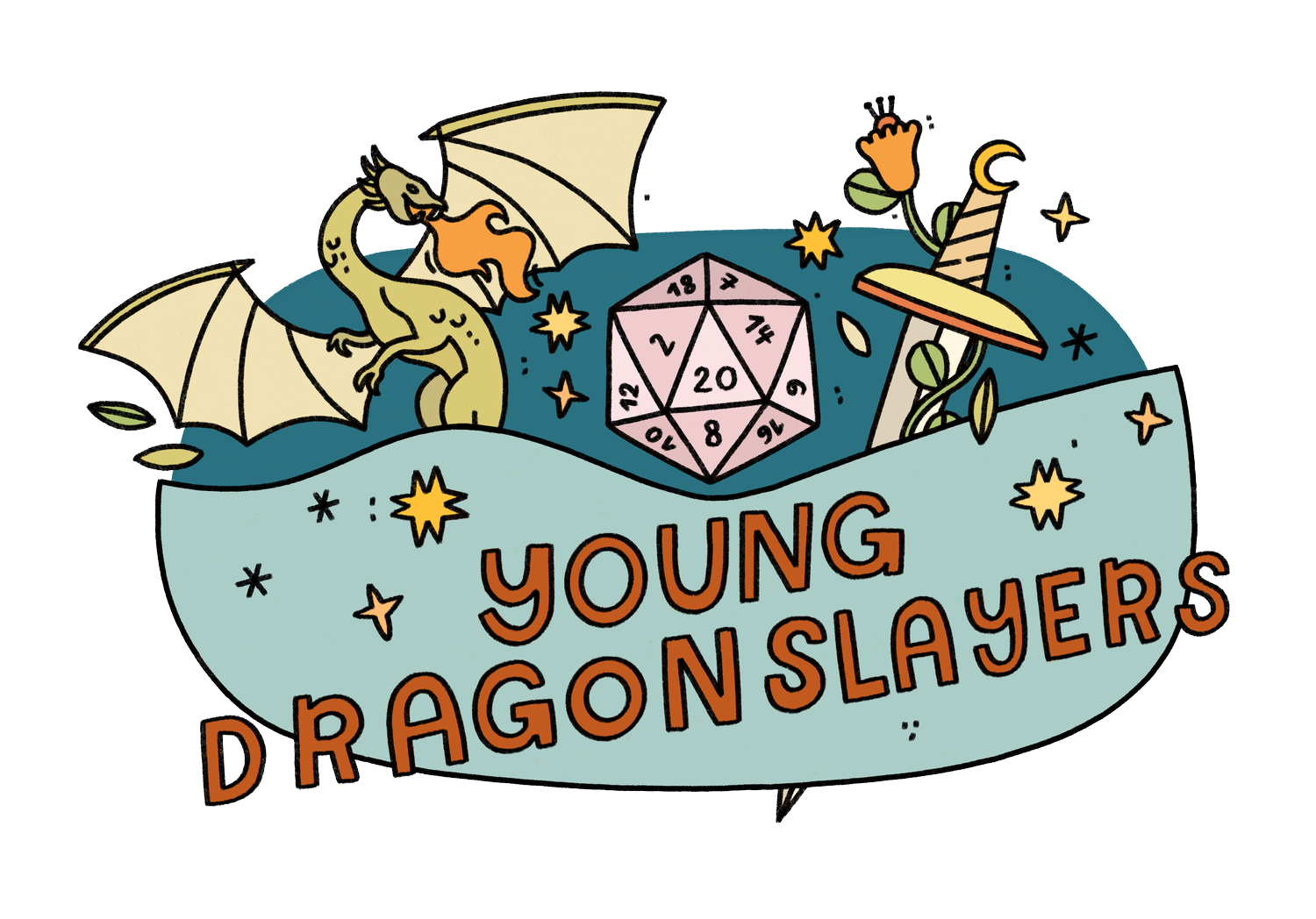What is the Rule of Cool?
The Rule of Cool: What it is, why it is, and just how chill you should keep your table.
Hang out with a Dungeons and Dragons group long enough, and you’ll probably pick up on some tabletop tropes—maybe even the legendary struggle between so-called “Rules Lawyers” and believers of the “Rule of Cool.” Rules Lawyers are often depicted as insufferable, know-it-all nerds with an encyclopedic knowledge of the game, always gleefully ready to pull out some obscure regulation that’s sure to spoil everyone’s fun. On the other hand, those who play by the proverbial Rule of Cool—that is, bending or even trashing certain rules in order to make things more fun, interesting, and/or triumphant—can be seen as sloppy, disorganized, or even just plain cringe.
These two caricatures are often portrayed as opposing forces engaged in an epic battle that has raged since time immemorial, but in my humble, bardic opinion, I’ve found the topic to be much more complicated than a 1v1 showdown. The debate between Rules Lawyers and the Rule of Cool isn’t an “either/or” or even an “us-versus-them” discussion, and for both players and DMs, either style can have both pros and cons.
Above all, D&D should be a fun, engaging, safe, and inclusive space for everyone at the table. So instead of throwing ourselves into one camp or another, let’s explore why both sides have their merits—and when we might want to use one philosophy over the other.
What is the Difference Between the Rule of Cool and the Rules as Written?
The Rule of Cool is an unofficial D&D code of conduct that is followed by many DMs and players. The definition is basically this: if something your players want to do will make your game more interesting, fun, or just plain cool, you should allow them to do it. Don’t let nitpicky details from the Players Handbook get in the way of a good time.
On the other hand, you’ve got the rules as written (RAW). This is the the concrete, textual guidance from game manuals and official content. They’re how the creators and game developers intend for you to play Dungeons & Dragons.
How literally are we supposed to interpret these rules? And who decides how to interpret them in the first place? Can we modify certain codified mechanics in the case of a homebrew campaign? And, if so, how much wiggle room do we get?
Cue, the Rules Lawyer versus Rule of Cool debate.
Rules Can Be Cool: The Case for Rules Lawyers
The Rules Lawyer automatically sounds like a fun-sucking succubus, but that’s not entirely fair. Why is it not fair? Because rules are what define fairness in the first place. If there were no rules and everything in D&D were possible all the time, there would be no game. We’d all just be zinging around wish spells willy-nilly with infinite hit points, armor classes in the gazillions, and unlimited spell slots. There’d be no problems to solve, no villains to vanquish, and no challenges to creatively overcome. What we have to understand is that rules, limitations, and boundaries are what create conflict. Conflict is what creates tension, tension is what creates excitement, and excitement is what makes these epic stories so darned fun.
Think about how the rules create tension in combat: We only get a limited number of spell slots, so we have to be strategic about how and when we use them. Even with our +2 longsword, we know our chances of hitting that armored giff are only 55%, so we hold our breath every time we roll our attack and cheer when fortune smiles down with a nat 20.
Put simply, in order for us to succeed, there has to be a chance of failure. If we didn’t have the rules, victory would just happen without any effort—and that’s neither fun nor engaging.
When to Follow the Rules as Written
It can also be frustrating when rules aren’t consistent. Let’s say the barbarian rolls a saving throw and takes full damage from a trap, but then the ranger gets the exact same number and only takes half. Whoever’s playing that bereft barbarian would probably be debating going into a real-life rage. It would be one thing if they didn’t make the save, but this simply isn’t fair.
Certain characters might have advantageous attributes in one area (for instance, the halfling’s nimbleness helping out in stealth and sleight of hand), but that comes at a disadvantage in other areas (in the case of our halfling, strength and/or reaching things on the highest shelf in the pantry). When we create our characters, we take some advantages at the expense of others. This makes everyone in the party different and good at different things, which is what makes the party—teamwork, unity, and creativity—so important in the first place. Rules and limitations are what make this possible, and as frustrating as it may be for your wizard to take fire damage on their failed saving throw, it also gives the cleric a chance to shine with their healing magic.
Following the rules as written can also be critical when it comes to spellcasting. For instance, can a warlock use Control Water to reverse the flow of the big bad’s circulatory system and cause a stroke? I’d give this idea an A for ingenuity (and an A+ in the “ghoulishly disturbing” department), but this spell *specifically* manipulates water, and blood is a mixture of water, platelets, etc. In addition, “freestanding water” implies that the water is independent of any notable force or influence—in this case, the big bad’s chunky hunk of heart muscle pumping blood through their body.
As much as I appreciate the cleverness, in my humble, bardic opinion, using Control Water to induce cardiac arrest would be beyond the written limitations of the spell. But we’ve *got* to go back to the rules in order to make that determination, and another DM might see things differently.
Fudging the Numbers: The Case for the Rule of Cool
At the other end of the spectrum, we have our Rule of Cool enthusiasts. And, yes, the Rule of Cool can apply both to DMs and players. As a DM, I’ve definitely docked monster HP to speed up a battle and/or give a first-time player the thrill of delivering the killing blow. And as a player, I’ve definitely failed to remind the DM that my paladin ended last session prone, flanked by four angry giff shock troopers at the start of the round.
Is this sneaky? Dishonorable? Wrong?
I know not everyone shares my humble bardic opinion, but when it comes to DMing, I have yet to perfectly plan any one of my sessions. Some groups play faster, some move through plotlines more slowly, and every party has completely different dynamics when it comes to teamwork and problem-solving. I’ve unintentionally pitted my players against monsters that were wayyyyy too strong, but instead of saying, “Whelp, guess they just weren’t prepared enough. TPK it is,” I’ve restricted certain attacks and *forgotten* (wink wink) to take a few legendary actions. Similarly, I’ve boosted enemies that I wanted to be more of a challenge—the subtle art of reskinning my monsters in real time.
When (and How) to Use the Rule of Cool
I also fully confess to *certain* NPC rolls either succeeding or failing for the sake of the story, particularly when it comes to time-bound one shots or dramatic, gasp-worthy reveals. Love me or hate me for it, there are instances where we simply don’t have time to explore the consequences of failure or alternate storylines (railroading versus sandbox is a whole other conversation).
Now, this doesn’t mean I go blatantly fudging the rules or employing deus ex machinas left and right. When I DM by the Rule of Cool, I make *minor*, fine-tuned adjustments—think of dimming the light or a slight, two-degree rudder shift instead of cranking the ship into a full turn—so that things run “cooler” and/or more smoothly.
And as far as I know, none of my players have even noticed.
However, this also means that when I suddenly remember that I’ve been forgetting to add necrotic damage to my monster’s bites, I’m not going to go back and dump six turns’ worth of undead hurt onto the party at the very end of the battle, nor will I accuse my players of “cheating” for not tracking my monsters’ mechanics. In cases like these, I always invoke the Rule of Cool—and add a sprinkle of grace for everyone involved, since no one in this multiverse is perfect. Both DMs and players have a metric ton on their minds throughout the length of a game, and we’re all forgetting something or another at any one point in time.
Rules Should Make Your D&D Game Fair and Fun
As DMs, we have to remember that the point of the rules isn’t to discourage players or squash creativity. This also applies to creative solutions and spellcasting mechanics. In the words of Captain Barbosa, we have the freedom to see them “more like ‘guidelines.’” If a paladin is a rootin’, tootin’ caveman cowboy, for instance, can her Find Steed spell summon a velociraptor instead of a horse? I’d say sure—just give it the statistics of a warhorse, turning the hooves attack into a chomp with the same attack bonus and 2d6 + 4 piercing damage. This is a reasonable, accommodating solution with clear boundaries that lets the character have flavor without being ridiculously overpowered.
The ultimate aim of the Rule of Cool is to foster more freeform fun, creativity, and engagement at the table. This doesn’t mean throwing every aspect of good order and discipline out the window, but it can mean tweaking little, subtle mechanics to enhance the story, the playstyle, and your players’ experience.
The Rule of Cool: In Conclusion
At the D&D table, it’s all for one and one for all. Despite how it may seem in the throes of a deadly encounter, DMs and players are always on the same team, working together to bring a fun, dynamic story to life. A DM’s job is to create this experience through plot, game mechanics, and role-playing interactions, and this leaves a lot of gray area to explore, particularly between the false dichotomies of the uptight Rules Lawyer and the flippant Rule of Cool Acolyte.
The bottom line is, no DM—or player, for that matter—has to be either a lawful stickler or a ruleless rogue. Rules are what make the game dynamic, complex, and challenging, and knowing when to flex, modify, and/or creatively interpret those rules is what keeps the game fresh and exciting no matter how many times you play.
My humble, bardic advice? Don’t stake out in one camp or the other. Instead, seek to understand the pros and cons of both. And if you ever have trouble finding this happy medium, I highly recommend what I call the DnDrenity Prayer:
Table gods,
Grant me the brains to know the rules,
The heart to play it cool,
And the wisdom to hold both vibes.
Come Play it Cool with Us!
Want to learn more about using the rules and tools of D&D to craft your own fantastical adventures? Join our online course, which helps enthusiastic D&D players become expert Dungeon Masters.
You might also consider joining us for one of our professionally run, weekly D&D games for kids and teens. These inclusive groups welcome players of all genders, backgrounds, and experience levels. You can learn a lot from watching a seasoned DM at work, and who knows: you might just make some friends along the way.






